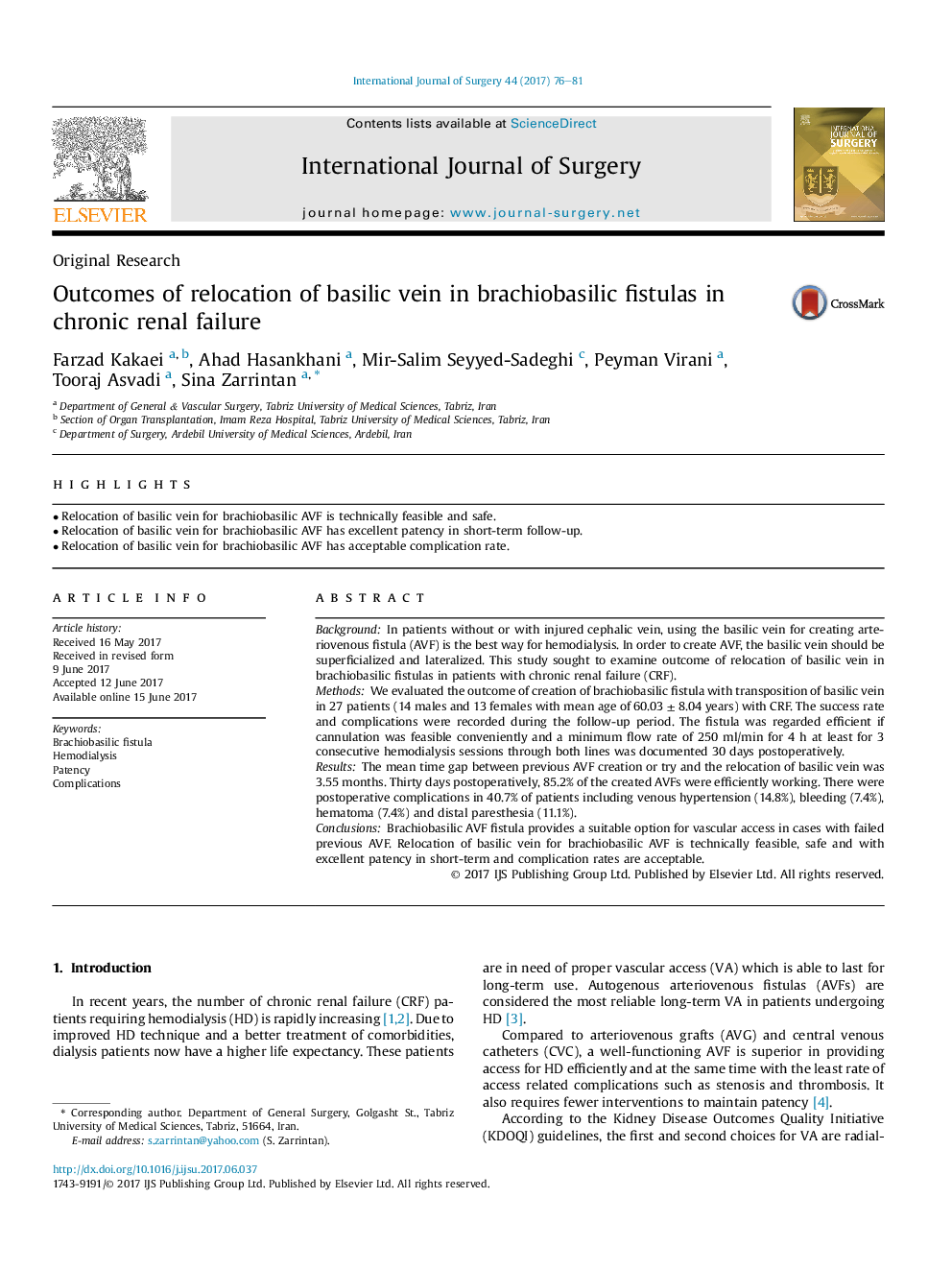| Article ID | Journal | Published Year | Pages | File Type |
|---|---|---|---|---|
| 5731663 | International Journal of Surgery | 2017 | 6 Pages |
â¢Relocation of basilic vein for brachiobasilic AVF is technically feasible and safe.â¢Relocation of basilic vein for brachiobasilic AVF has excellent patency in short-term follow-up.â¢Relocation of basilic vein for brachiobasilic AVF has acceptable complication rate.
BackgroundIn patients without or with injured cephalic vein, using the basilic vein for creating arteriovenous fistula (AVF) is the best way for hemodialysis. In order to create AVF, the basilic vein should be superficialized and lateralized. This study sought to examine outcome of relocation of basilic vein in brachiobasilic fistulas in patients with chronic renal failure (CRF).MethodsWe evaluated the outcome of creation of brachiobasilic fistula with transposition of basilic vein in 27 patients (14 males and 13 females with mean age of 60.03 ± 8.04 years) with CRF. The success rate and complications were recorded during the follow-up period. The fistula was regarded efficient if cannulation was feasible conveniently and a minimum flow rate of 250 ml/min for 4 h at least for 3 consecutive hemodialysis sessions through both lines was documented 30 days postoperatively.ResultsThe mean time gap between previous AVF creation or try and the relocation of basilic vein was 3.55 months. Thirty days postoperatively, 85.2% of the created AVFs were efficiently working. There were postoperative complications in 40.7% of patients including venous hypertension (14.8%), bleeding (7.4%), hematoma (7.4%) and distal paresthesia (11.1%).ConclusionsBrachiobasilic AVF fistula provides a suitable option for vascular access in cases with failed previous AVF. Relocation of basilic vein for brachiobasilic AVF is technically feasible, safe and with excellent patency in short-term and complication rates are acceptable.
